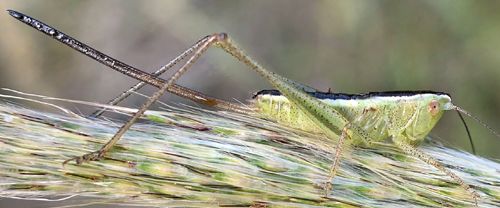
Conocephalus strictus (straight-lanced meadow katydid nymph)
| In spite of the impressively long ovipositor on this female, two clues indicate that she is still immature: an adult will have small, but obvious, wings, and the dorsal stripe will be brown instead of black. |
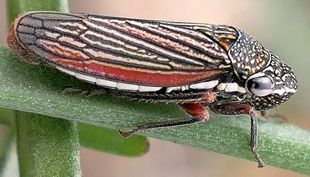
Cuerna costalis (leafhopper)

Balclutha neglecta (leafhopper)
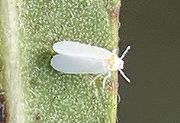
Unknown sp. (whitefly)
| Its name is misleading, as the tiny whitefly is not a true fly; it is instead related to aphids, scale and planthoppers. Encountered only occasionally in the wild, as shown above, a large population can become destructive in controlled environments such as greenhouses. |
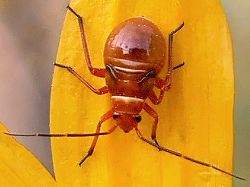
Calocoris barberi (plant bug nymph)

Oncerometopus nigriclavus (plant bug)
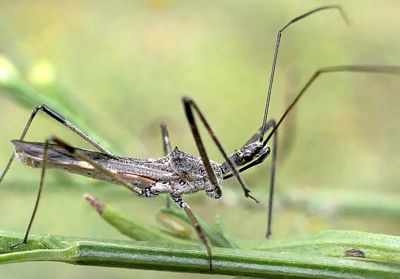
Zelus tetracanthus (four-spined assassin bug)
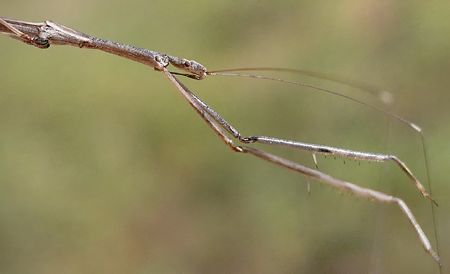
Emesaya brevipennis (thread-legged bug)
| Both insects shown above are predators in the family Reduviidae (the assassin bugs), but they have different equipment for catching their prey. The Four-spined Assassin has sticky hairs that work like flypaper covering its front legs, while the Thread-legged Bug has spiny raptorial appendages that are reminiscent of a mantid. |
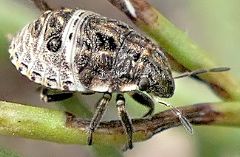
Unknown sp. (shield bug nymph)
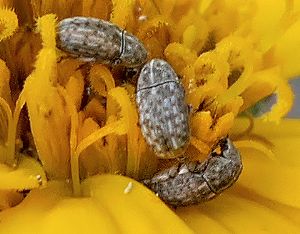
Trigonorhinus limbatus (fungus weevils)
| The next series of images illustrates the wide variety of grasses found in one small plot. I photographed over 20 species, and they were just those currently in bloom. A search in the spring would undoubtedly reveal others. |

Eragrostis hirsuta (bigtop lovegrass)
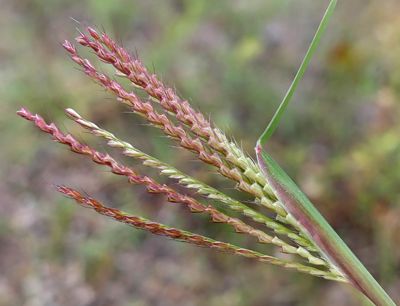
Chloris verticillata (tumble windmill grass)
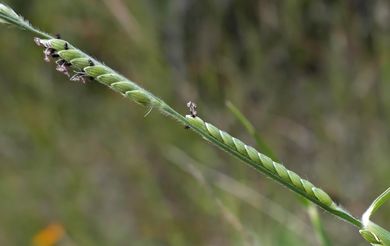
Eriochloa sericea (Texas cupgrass)

Hilaria belangeri (curly mesquite)
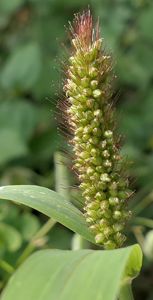
Setaria adhaerens (bur bristlegrass)

Tridens albescens (white tridens)

Sporobolus compositus (tall dropseed)
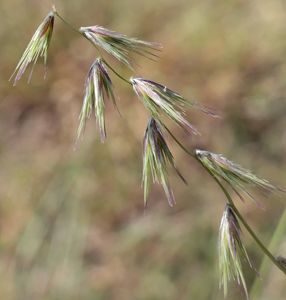
Bouteloua rigidiseta (Texas grama)
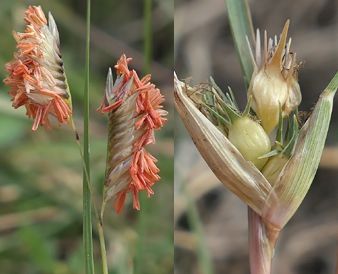
Bouteloua dactyloides (buffalo grass: male & female)
| Most grass plants possess both male and female reproductive structures. Buffalograss is one of the few that has separate plants. |

Paspalum pubiflorum (hairyseed paspalum)
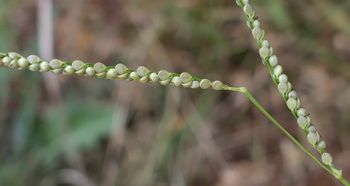
Paspalum setaceum (thin paspalum)
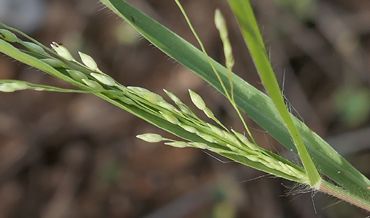
Panicum hallii (Hall's panicgrass)
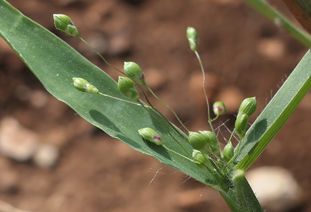
Dichanthelium sphaerocarpon (roundseed panicgrass)
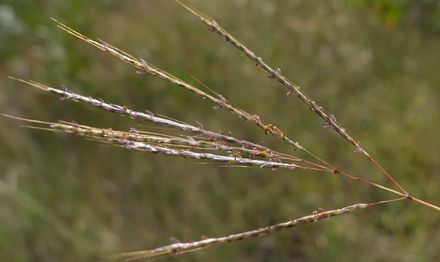
Bothriochloa ischaemum (King Ranch bluestem)

Bothriochloa laguroides (silver bluestem)
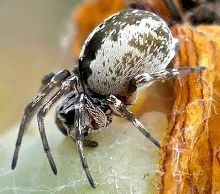
Dictyna sp. (meshweb weaver)
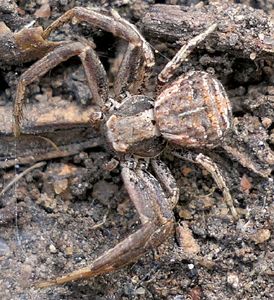
Xysticus sp. (crab spider)
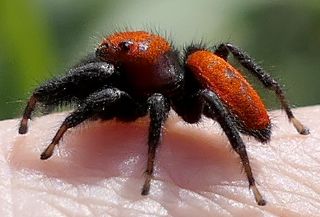
Phidippus cardinalis (cardinal jumper)
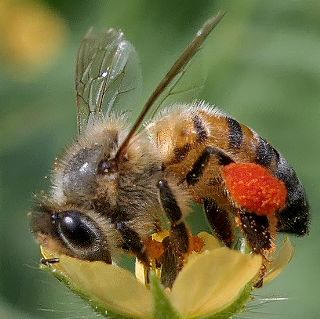
Apis mellifera (honey bee)
| Based on decades of observation, I am fairly certain that although bees are the most important pollinators in most habitats, true flies (Diptera) are certainly a close second. They tend to be more common and diverse in every season, while their flight and nectaring habits are quite similar to those of bees. |

Lucilia sp. (blow fly)
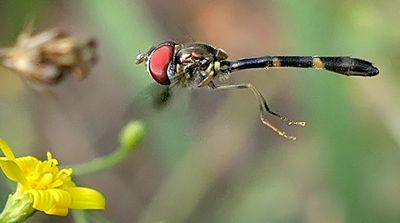
Ocyptamus fascipennis (flower fly)
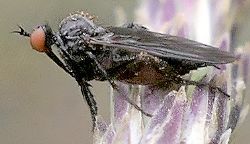
Unknown sp. (dance fly)
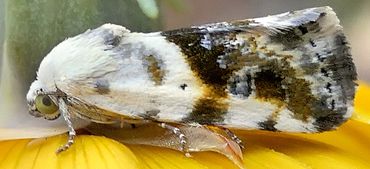
Ponometia candefacta (olive-shaded bird dropping moth)
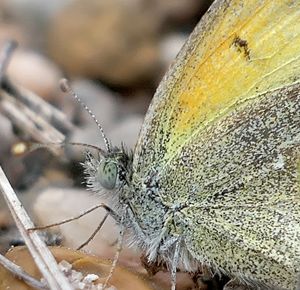
Nathalis iole (dainty sulphur)

Kallstroemia hirsutissima (hairy caltrop)
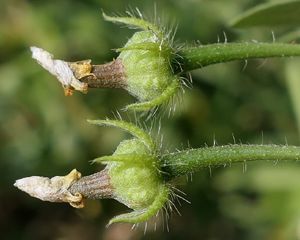
Kallstroemia hirsutissima (hairy caltrop seed pods)
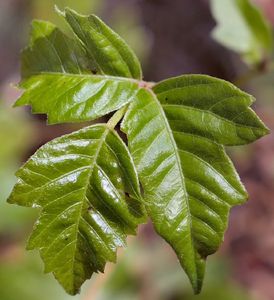
Toxicodendron radicans (poison ivy)
| I learned the difference between Poison Ivy and Virginia Creeper when I was a child, certainly able to count three vs. five leaves. I have come to realize, though, that some adults cannot even distinguish Poison Ivy from Seven-leaf Creeper. Oh well. |
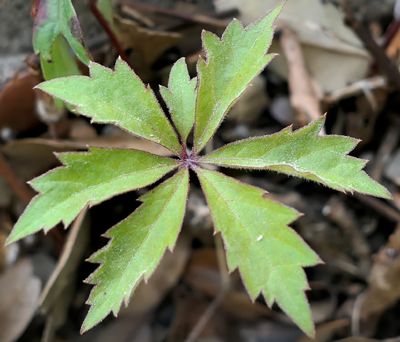
Parthenocissus heptaphylla (seven-leaf creeper)
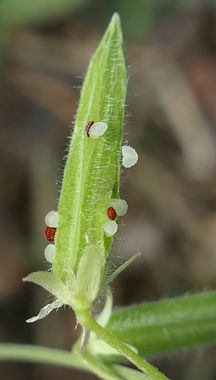
Oxalis stricta (yellow woodsorrel seed pod)
| If you have ever poked at a mature Oxalis seed pod and been surprised by the resultant explosion, you're not alone. The seeds, which look somewhat like little brown bugs while the attached arils resemble white grubs, burst out and can travel more than a foot (protect your eyes and keep your mouth shut) due to the release of stored strain energy. |
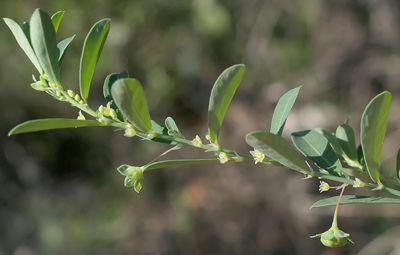
Phyllanthus polygonoides (smartweed leafflower)
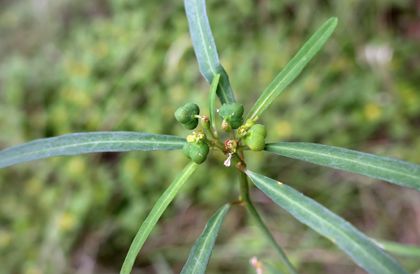
Euphorbia cyathophora (wild poinsettia)
| Rather unimpressive compared to their cultivated counterparts, wild poinsettias still hint at their colorful potential. The image above shows just one form of the species that can often have gorgeous red markings on its leaves, while the individual shown below is about as multi-hued as that species gets. |
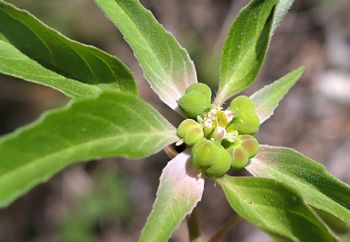
Euphorbia dentata (toothleaf poinsettia)
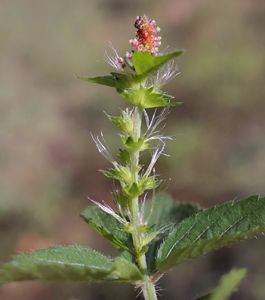
Acalypha rhomboidea (three-seed mercury)
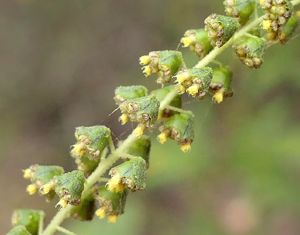
Ambrosia trifida (giant ragweed)

Synchytrium sp. (false rust fungus)
| About the only thing that False Rust has in common with the more familiar Rust is that it is a pathogenic fungus that infects plants. False Rusts superficially resemble Rusts (such as the genus Puccinia), but are in a different division that contains an early diverging fungal lineage. |

![]()